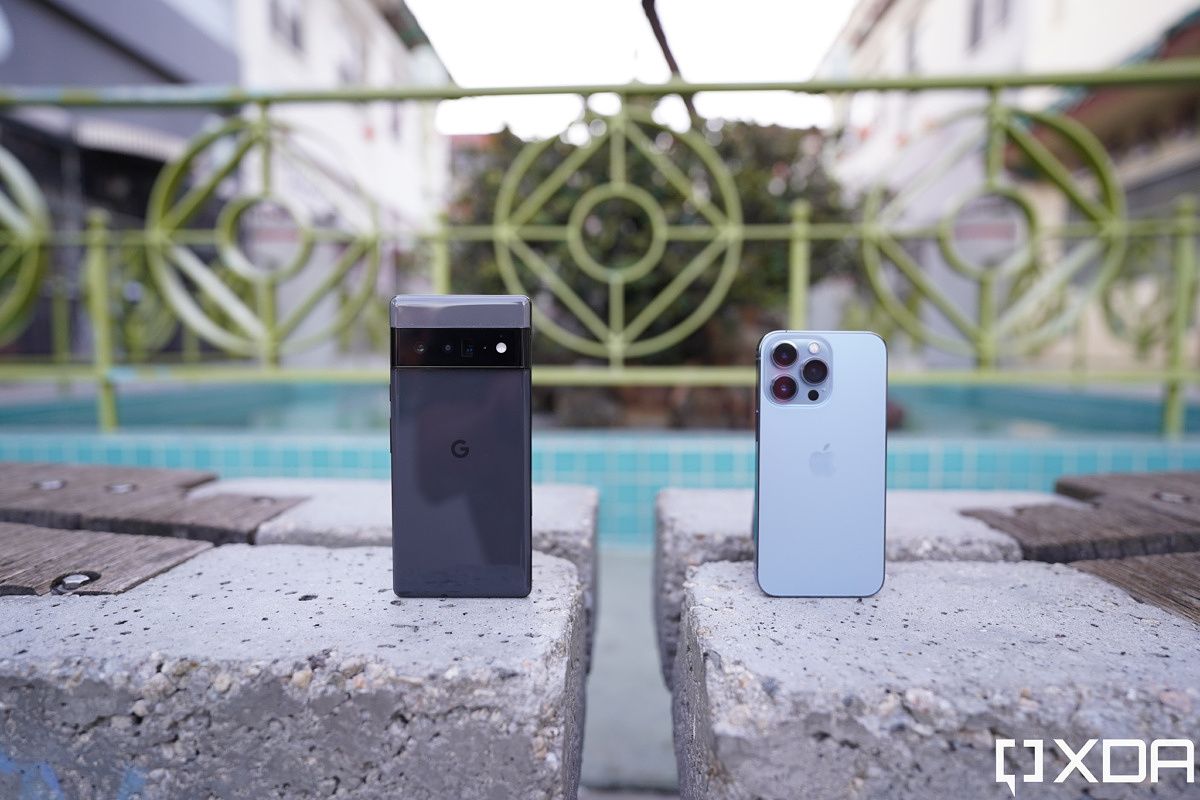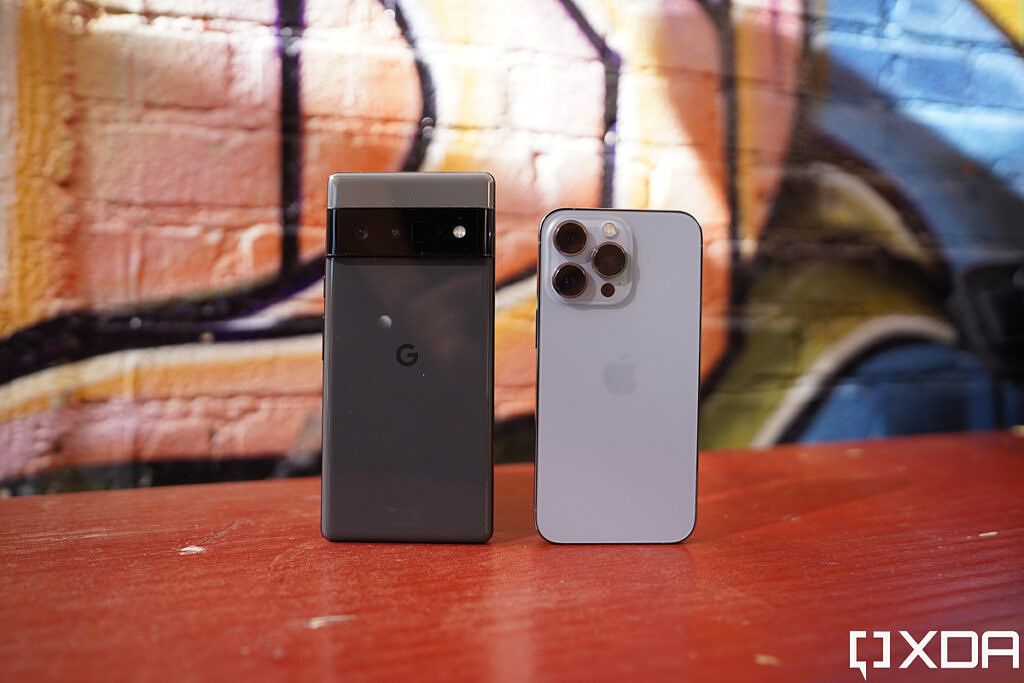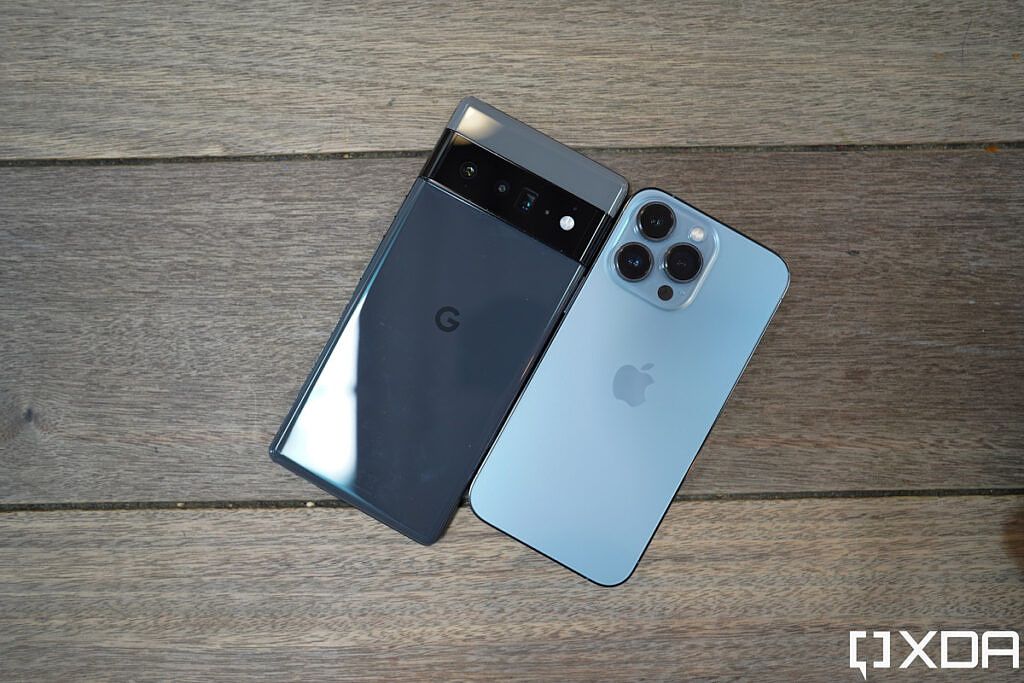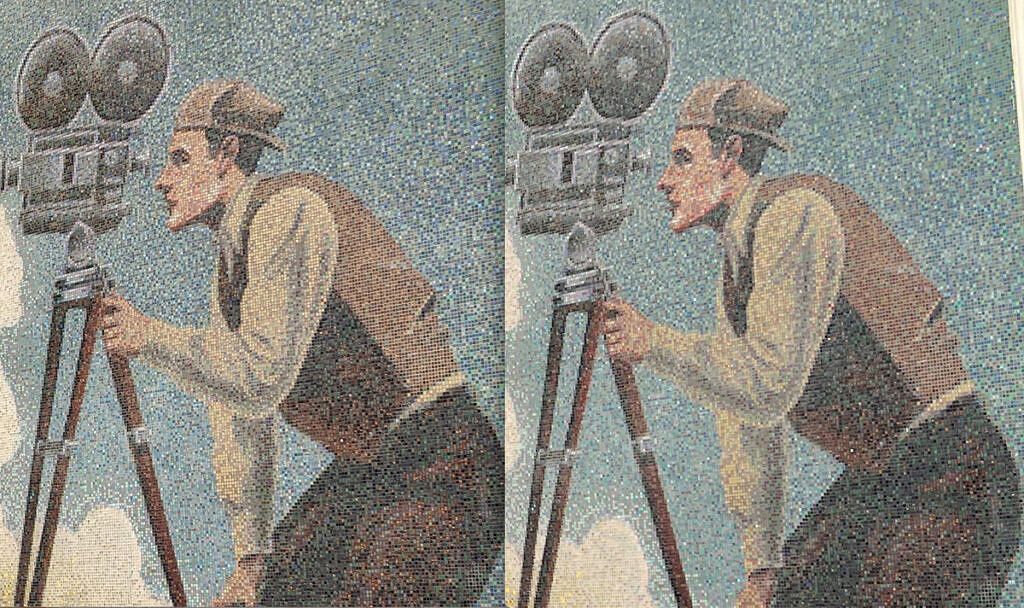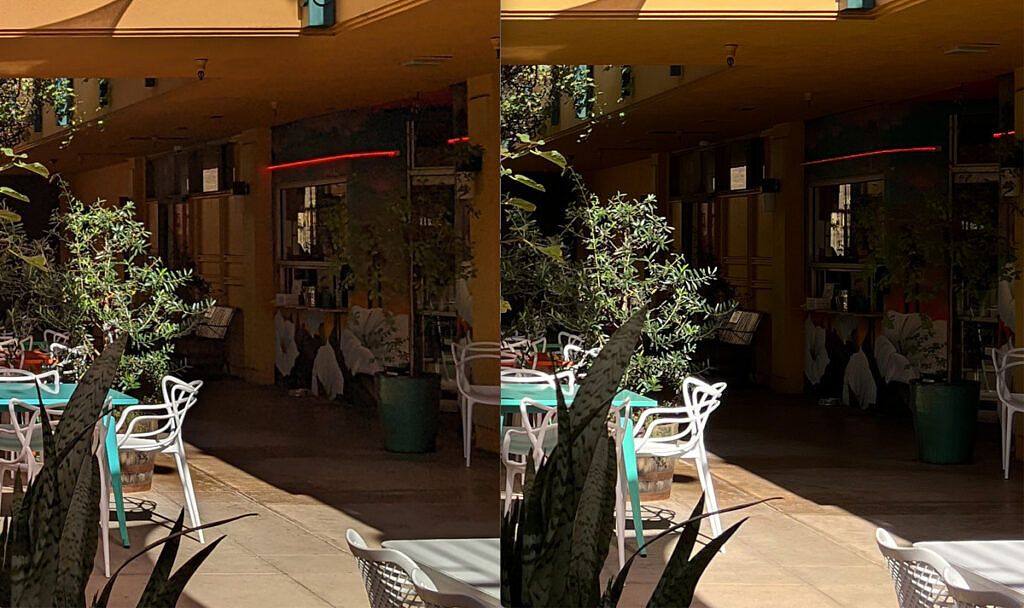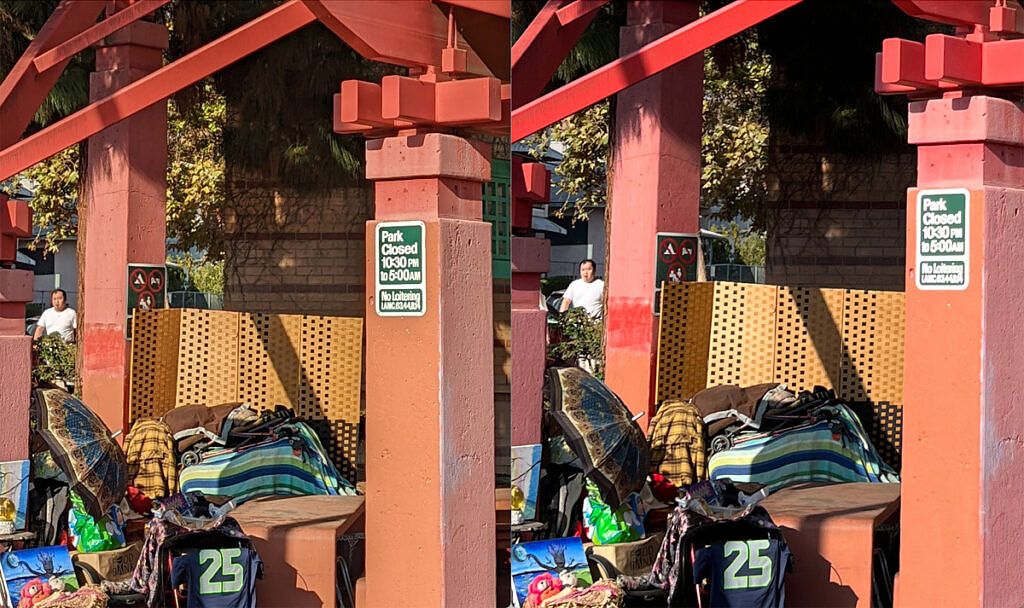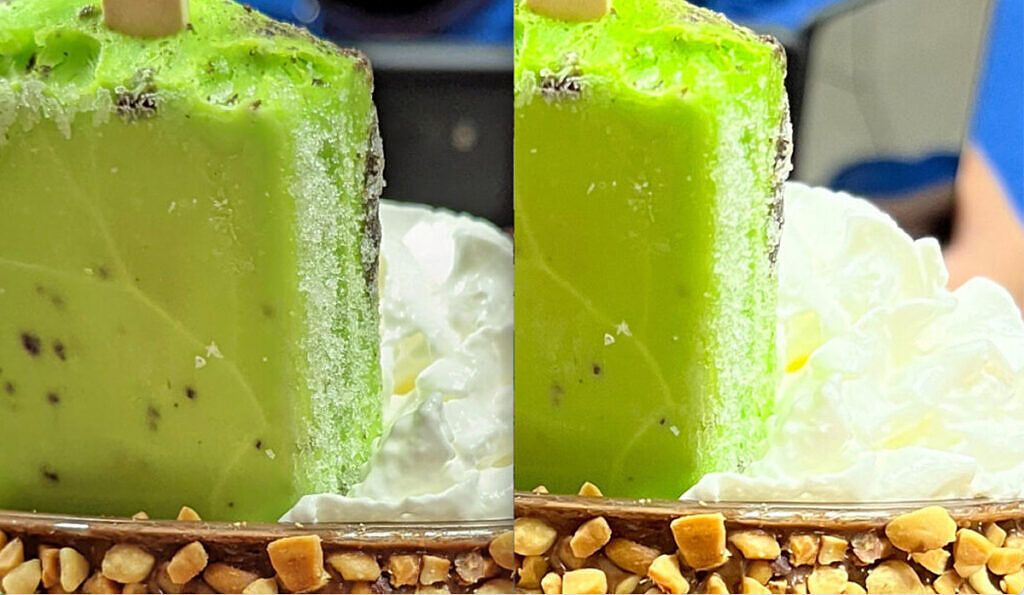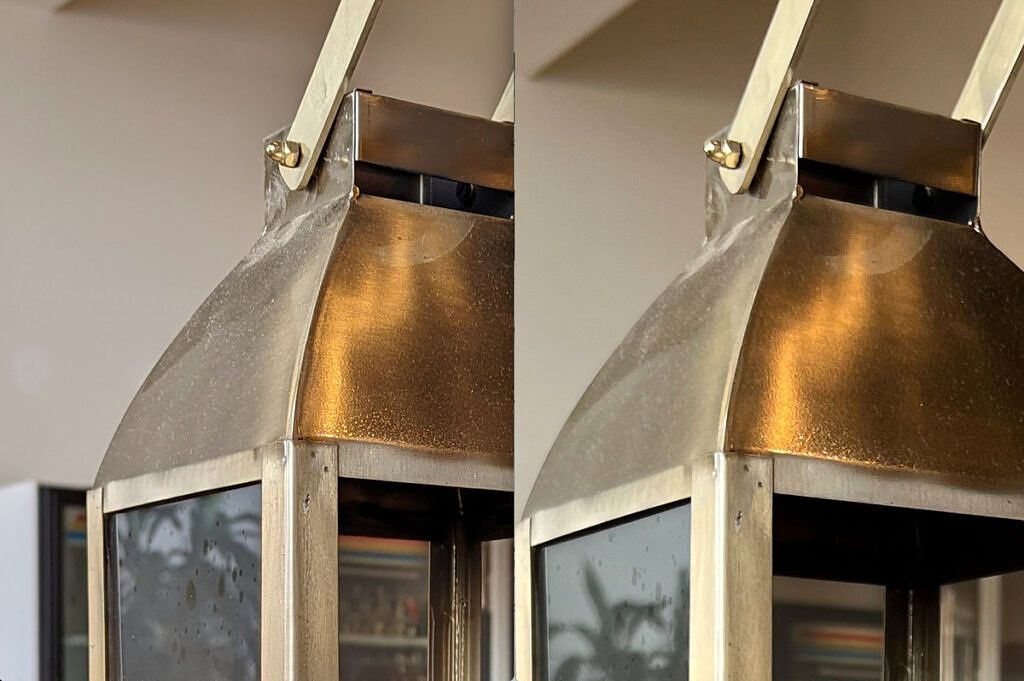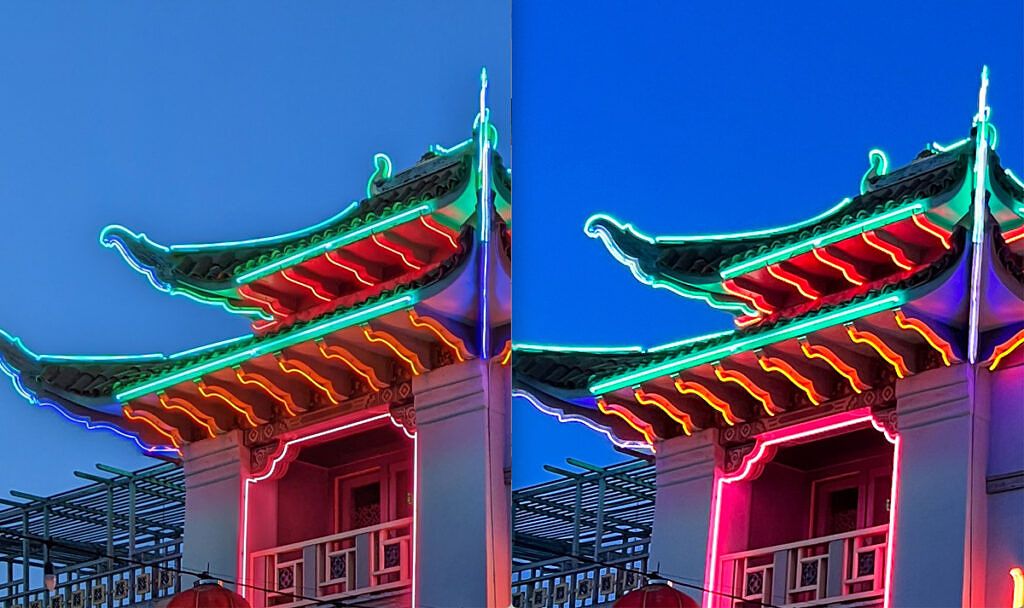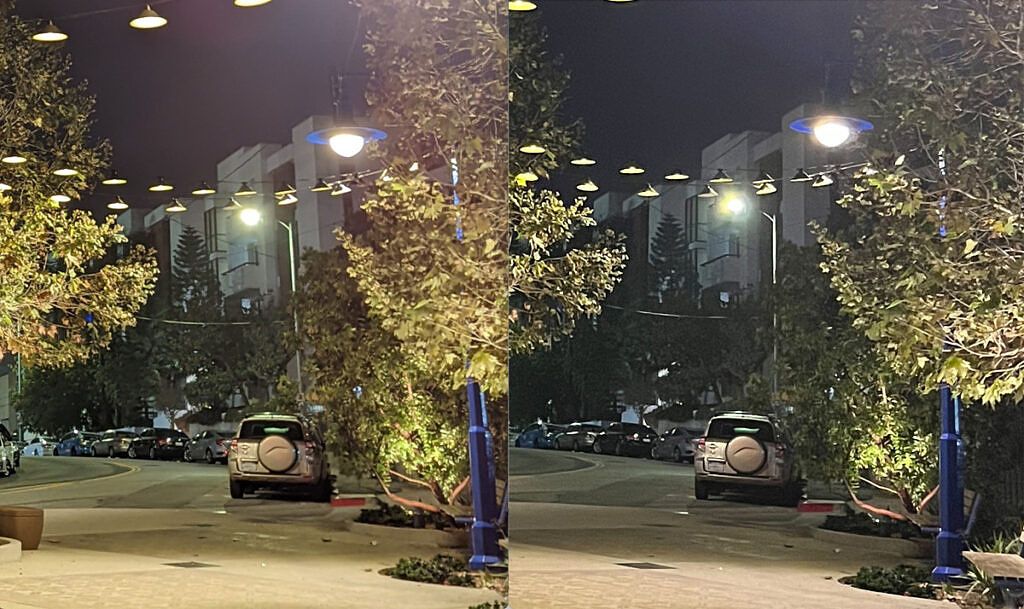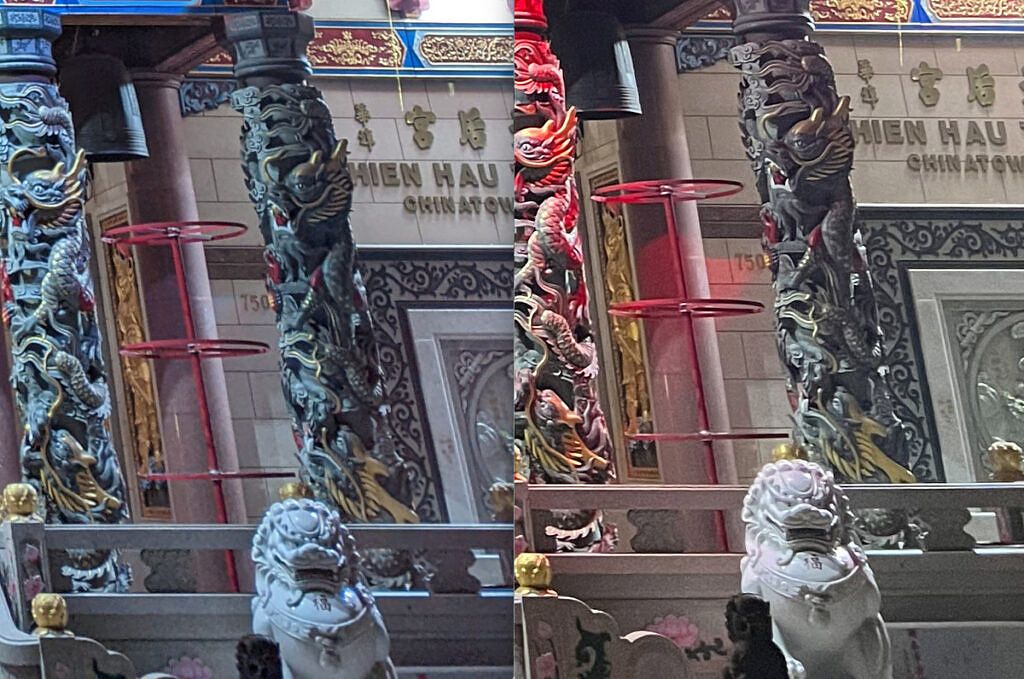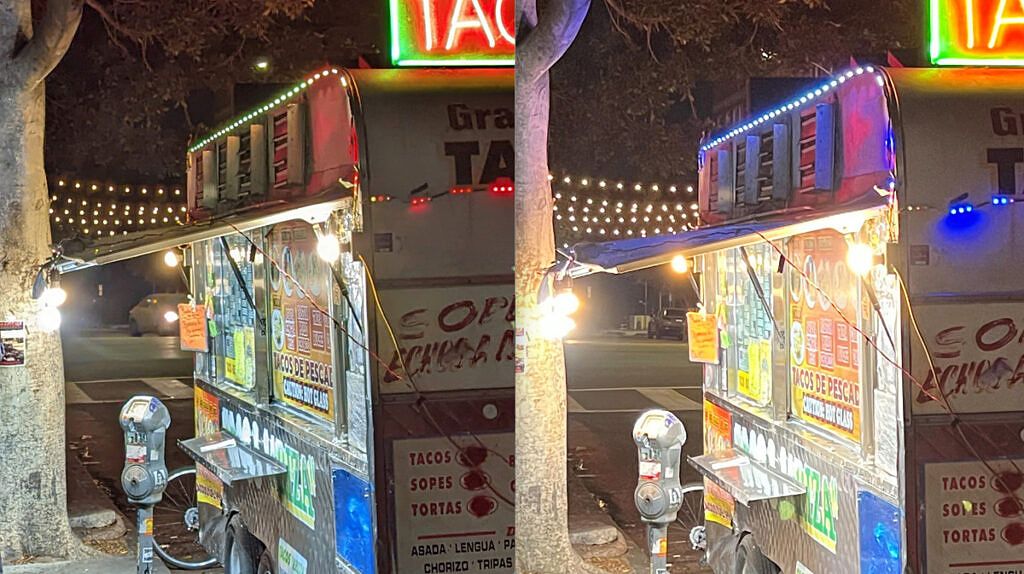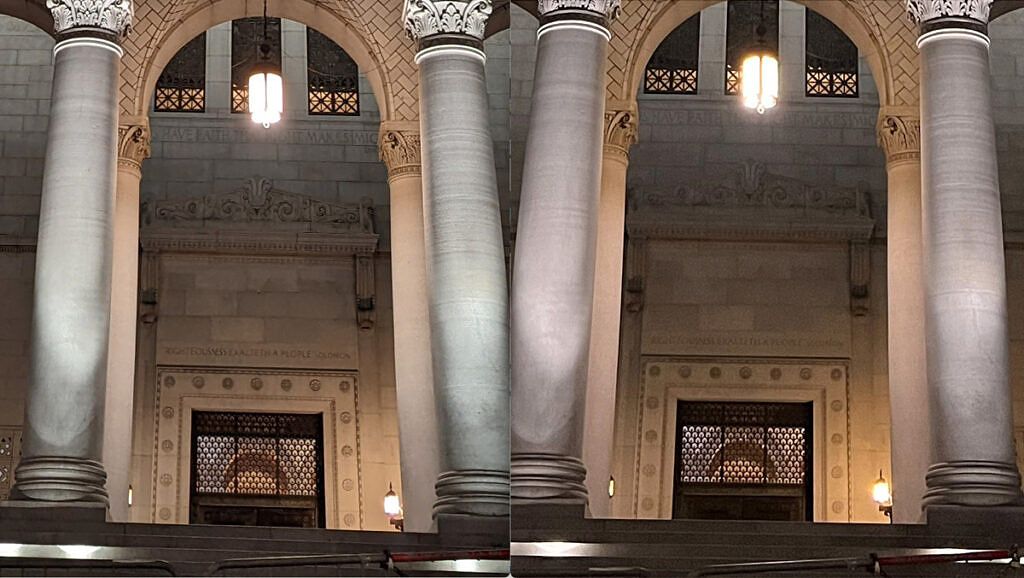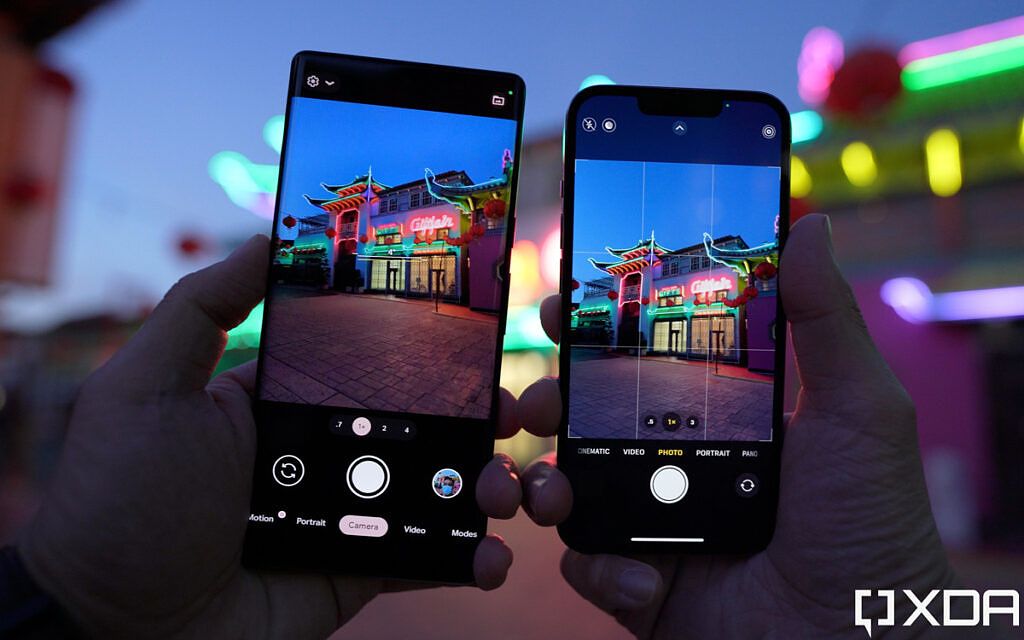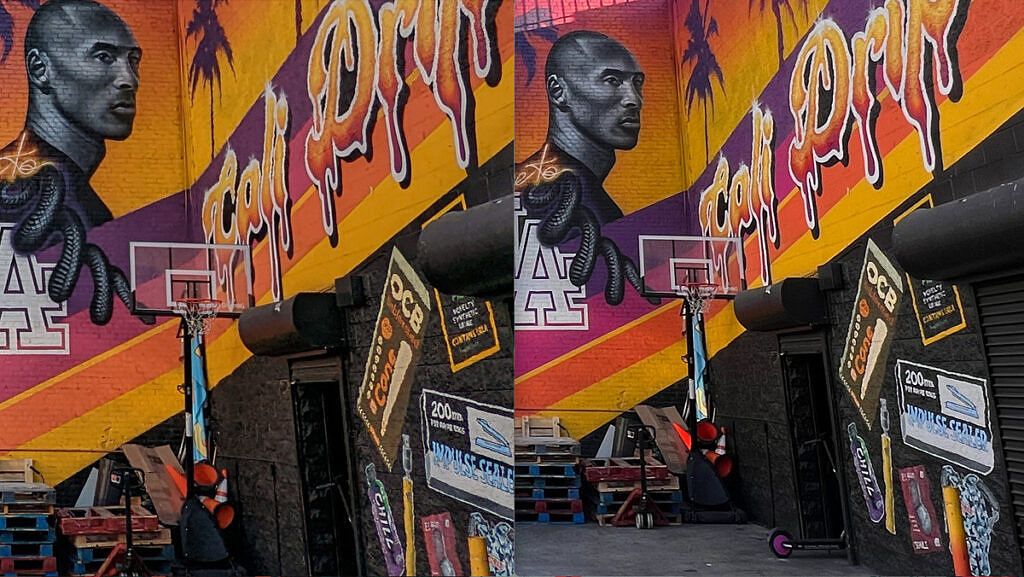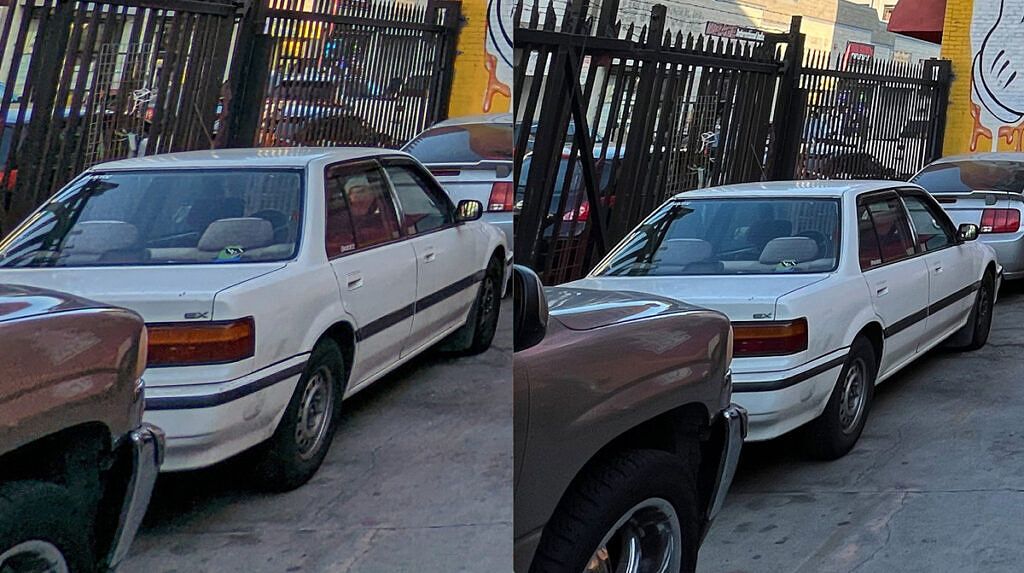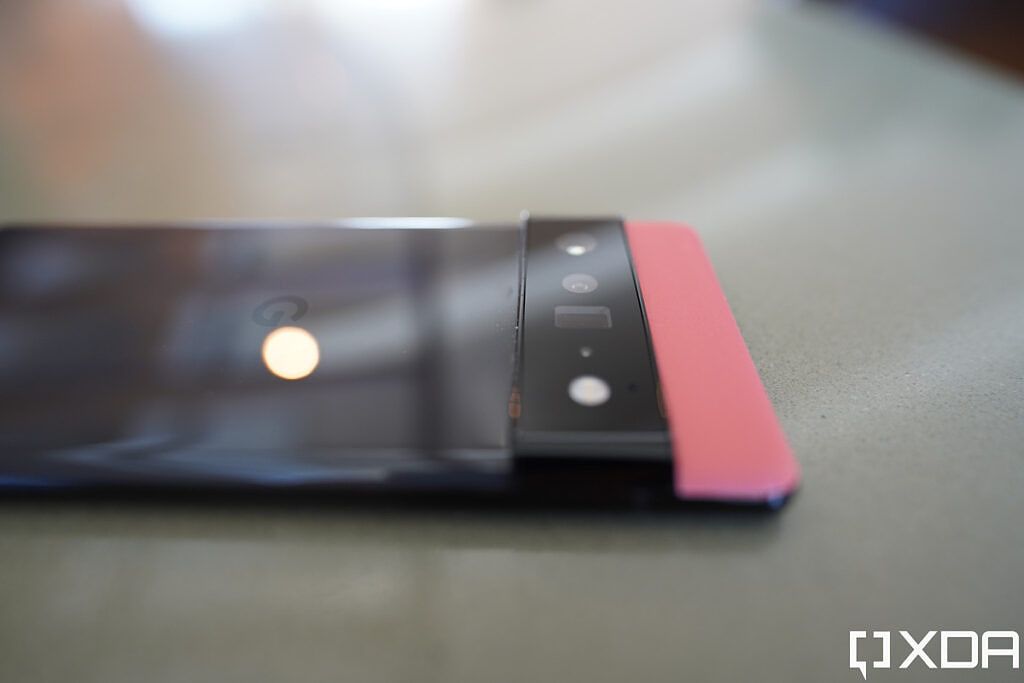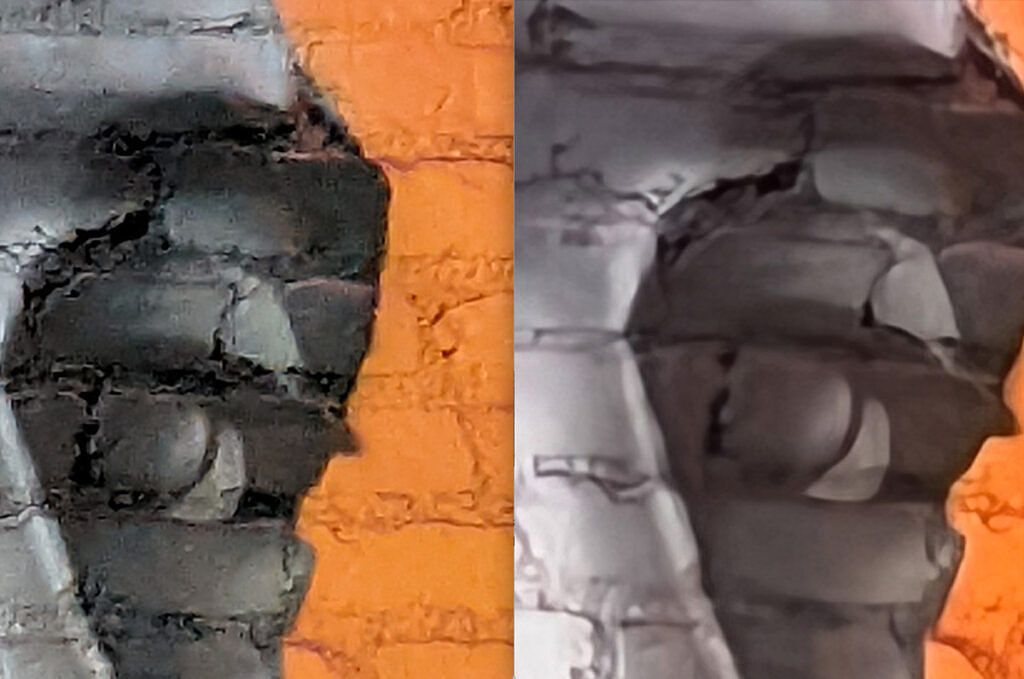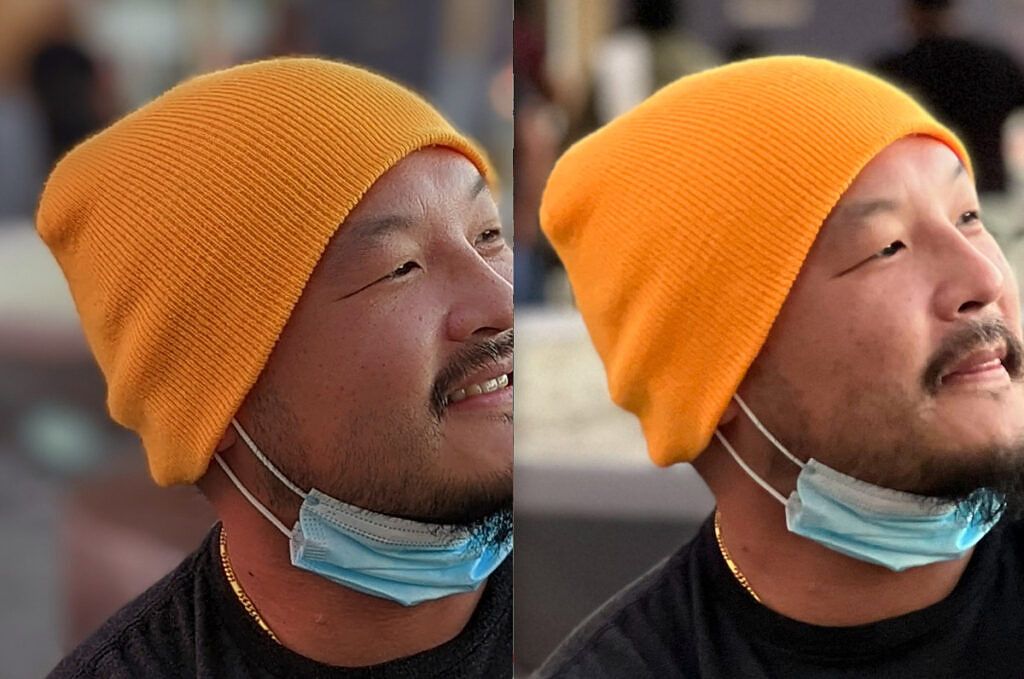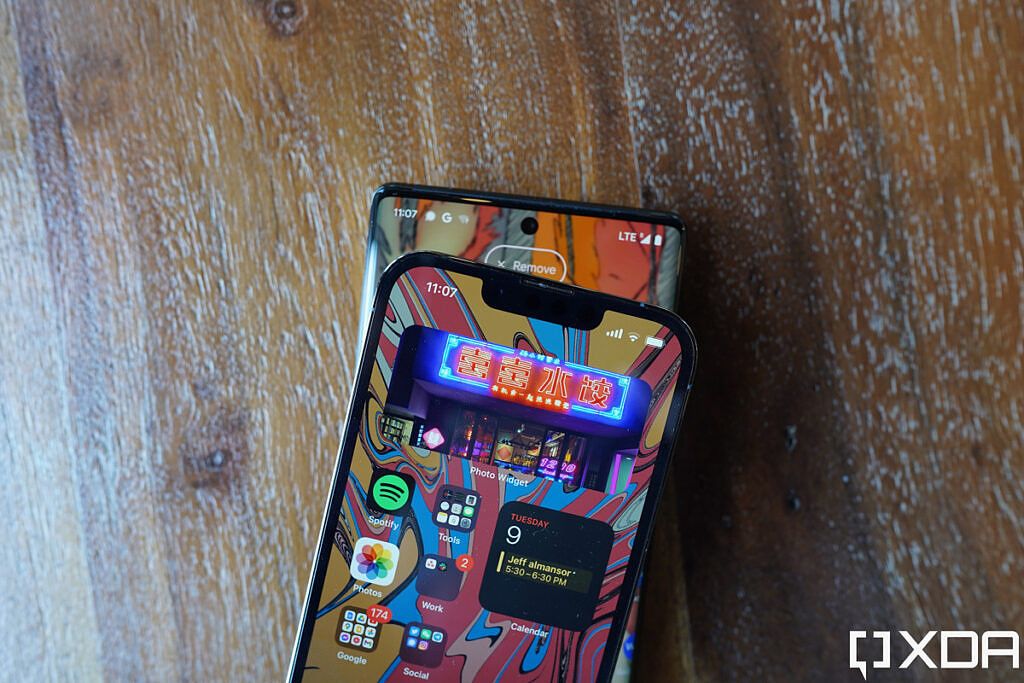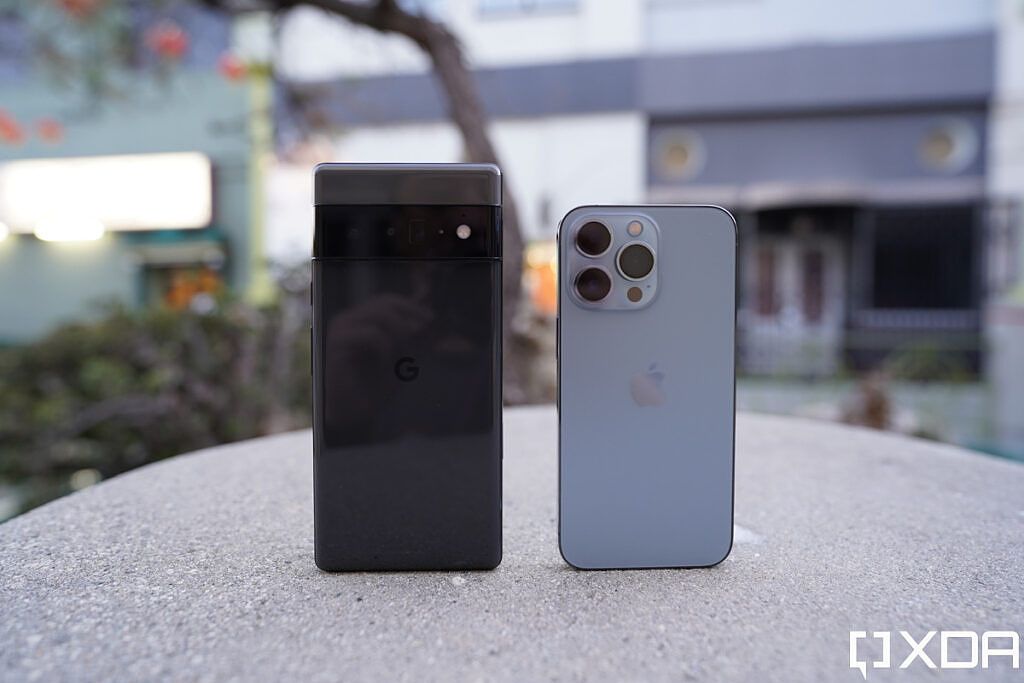The Google Pixel is often said to be "the iPhone of Android," mainly because Google supposedly design and built the Pixels from scratch, and because Google makes Android, this gives the Pixels a sense of hardware-software synergy that only Apple can offer. But that wasn't really true, at least in the early days. The first Pixel was basically manufactured by HTC using leftover HTC parts, and all the way up until a few months ago, Pixel phones still sourced its brain -- the SoC -- from a third-party vendor. But the Google Pixel 6 changes things. Google has much more control over its hardware production now, and this is the first phone to run Google's own self-designed SoC, Tensor. This means the Google Pixel 6 is finally, the iPhone of Android.
And just as Apple did with the iPhone 13 series, Google gave the Pixel 6 significantly improved camera hardware (both companies had stubbornly resisted chasing camera hardware trends in years past), and so this year's camera comparison between the two phones is the most interesting yet. How exactly does the Google Pixel 6 Pro compare against the Apple iPhone 13 Pro when it comes to the camera specifically? Come along as we explore this precise question to see which phone does cameras better.
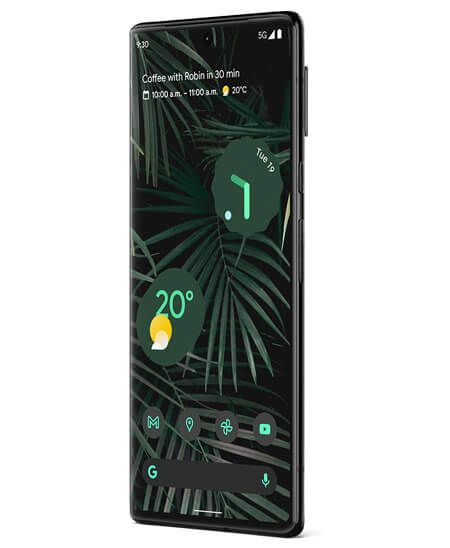
Google Pixel 6 Pro
The Pixel 6 Pro is the larger sibling that comes with Google's new Tensor chip, a modern design, and an extra telephoto camera.
About this review: This camera comparison was written after testing a Google Pixel 6 Pro that XDA purchased and an iPhone 13 Pro provided by Apple, for a week. Google Ireland did provide my colleague Adam Conway with a Pixel 6 Pro review unit, but it was not used in this piece. Neither company had any input in this article.
Google Pixel 6 Pro vs Apple iPhone 13 Pro: Main camera
The Google Pixel 6/6 Pro relies on a 50MP GN1 sensor sourced from Samsung. This is a sensor used in several Android phones in the past (mainly Vivo's) to great results. Its large 1/1.31-inch size takes in more light and shoots with a shallower focus pane for increased depth-of-field. Pixel-binning, which combines four pixels' worth of data into one large pixel, further improves the Pixel 6 Pro's 12.5MP images.
The iPhone 13 Pro, meanwhile, uses a 12MP main camera with a custom Sony sensor. Apple doesn't release image sensor size, but calculations have concluded that it's a 1/1.5-inch sensor, so it's a bit smaller than the Pixel 6 Pro's. But it has a faster f/1.5 aperture to the Pixel 6 Pro's f/1.8.
After shooting over 500 pictures with each phone over the course of a week, I have noticed some overall trends that hold true for most shots captured by the main camera:
- The Pixel 6 Pro's image is almost always sharper/more detailed if I zoom in and pixel peep.
- The Pixel 6 Pro's images tend to have a cooler blue tone, while Apple has a warmer, yellow tone.
- However, this isn't always the case: sometimes the iPhone 13 Pro will dial up the contrast for more striking colors, which is something past iPhones did not do.
- For close-up shots, the Pixel 6 Pro has a stronger focus dropoff, meaning more natural bokeh.
- The Pixel 6 Pro consistently brightens up shadows more than the iPhone, which can be either good or bad.
Main camera, well-lit scenes: Colors, Contrast, Sharpness
This first shot is an easy one, shot under ideal lighting conditions. Both phones captured a very similar image. You can already see the shadows in the Pixel's shots are slightly less dark than in the iPhone's shot. But because this is a pretty well-lit scene, the difference is minimal.
Zooming in 100%, however, we can see the Pixel 6 Pro's shot is a bit sharper. This will be the case for almost every shot.
Next, let's move to a slightly more challenging shot. This scene has more contrast, thanks to the random patches of awning/canopy, as well as the coffee shop to the right edge of the photo covered by the building's second-floor walking path. So we get some very different lighting situations in different parts of the same image.
We can see a more drastic example of the Pixel brightening up shadows by a bigger margin, this is likely due to a combination of the Pixel camera just being able to pull in more light and Google's more aggressive HDR. For this particular shot, because the contrast between lit and shadowed areas isn't that drastic yet, I prefer the Pixel 6's shot. The plant in the foreground is better detailed, and you can clearly see more of the coffee shop entrance under shade, particularly if you zoom in 100% like the below crops.
But Google's stronger HDR sometimes works against it. For some scenes, contrast and shadows add to the mood of a photo, like in this shot below with a bright orange structure. I like the iPhone's image more because there's greater contrast between the pastel-colored structure and the deeper shadows. It's just a more visually striking shot. Interestingly, the iPhone also artificially dialed up the contrast even more to make the shot pop. The structure is closer to the color represented in the Pixel's shot than in the iPhone's shot, and likewise, the sky isn't as perfectly blue that day as the iPhone's shot has it. In years past, this would definitely not be the case, but Apple really has changed up its cameras processing with the iPhone 13 Pro.
But again, zoom in, and the Pixel 6 Pro's shot is just sharper. This is likely due to the fact the Pixel 6 Pro has 50 million pixels' worth of data to play with, while the iPhone 13 Pro has 12 million.
In the next set, we move to an even higher contrast scene, shooting directly into the sun. Once again, I find the iPhone's shot more striking because the shadows are darker. In a shot like this, objects in the foreground should be drenched in shadows.
But if we move to extreme contrast shots, like the one below, we see the iPhone 13 Pro simply failed to find the proper balance, completely blowing the sky out the window just to highlight the brown shelf properly.
Main camera, close up shots: Sharpness, Depth-of-field
Apple made a big deal about the iPhone 13 Pro phones gaining a larger sensor than in years past. While the iPhone 13 Pro's 1/1.5-inch image sensor is indeed much larger than previous iPhones, it's still smaller than the sensors used in almost all Android flagships. And the GN1 sensor's 1/1.31-inch used in the Pixel 6 Pro is definitely larger -- which means it not only takes in more light, but has a shallower depth-of-field for natural bokeh if we take photos of objects up close.
This is clearly noticeable in the image below as there's more separation between the Mexican dessert (a milkshake with a Mexican Paleta popsicle) and my friend in the background. The extra depth adds drama and flair to the shot, highlighting the dessert as the star of the show.
And yes, the Pixel's shot is also more detailed if we zoom in. Not only can see better texture on the Paleta popsicle, but on the whipped cream too.
Here's another sample of natural bokeh shots.
And the 100% crop. The Pixel's shot is once again sharper.
Main camera, low light scenes: Dynamic range, Colors, Noise
Next, let's move to low-light shooting conditions. By default, both the Pixel 6 Pro and iPhone 13 Pro will turn on night mode automatically if there isn't enough ambient light. The Pixel 6 Pro, because it has a larger sensor, doesn't need night mode as often as the iPhone 13 Pro, but when it does need night mode, the Pixel 6 Pro will often take much longer for a shot. The iPhone 13 Pro caps the automatic night mode to 3 seconds max, while the Pixel 6 Pro can go up to five or six seconds.
Both the Pixel 6 Pro and iPhone 13 Pro will turn on night mode automatically if there isn't enough ambient light. But the Pixel 6 Pro, because it has a larger sensor, doesn't need night mode as often
For every shot here -- just like every shot in this entire article -- I shot on automatic without any manual tweaks. So I left it entirely up to the phone whether or not to use night mode in these low light shots. This is meant to emulate behavior from average users, people who just want an easy-to-use camera without needing to recognize when to activate certain settings. This is the target audience for both phones and that is how we judge them.
This first set was taken shortly after sunset, and because there are so many neon lights in Chinatown, this is only a moderately low light shot. We can see the iPhone image has dramatically bolder colors (the sky is so much bluer), thanks to the aforementioned random occasions when Apple decides to process colors like Samsung. It's a more striking shot than the Pixel's shot to my eyes, but it's really odd how inconsistent the iPhone 13 Pro has been in handling colors. It's worth noting the iPhone 13 Pro turned on a short one-second night mode, while the Pixel 6 Pro just captured the shot as is.
Zooming into 100% and we can see the iPhone's colors and contrast look a bit more visually striking, but there's a bit more noise, particularly if you look at the lower-left corner of the photo below the neon lights.
Next set, we move to a darker scene, 10 pm in downtown Los Angeles, with only street lights lighting up this small park. Both phones needed Night mode here, but the iPhone 13 Pro was able to capture the shot in two seconds while the Pixel 6 Pro needed a bit more than three seconds. The Pixel 6 Pro produces a lot more lens flare than the iPhone 13 Pro, but this could be considered a stylistic choice.
We can see the iPhone shot is noisier, but the tree leaves look a bit more natural. It's a bit over-processed in the Pixel's shot.
This next set was captured at midnight in Chinatown on a very dark street, with the most light coming from this temple. This is where we see the Pixel's cooler tones compared to the iPhone's warmer tones. In real life to my eyes, the iPhone shot better reproduced the colors, but the Pixel shot looks better in my opinion. We can also see the iPhone shot struggling with exposing all the different lights, blowing out the red lanterns on the right side of the temple. But this is what makes the aforementioned cases of iPhone randomly punching up colors baffling, because most of the time, the iPhone colors are more muted, more natural. The iPhone used a three-second night mode, while the Pixel shot took close to five seconds.
Viewing these at 100%, both shots are evenly matched in terms of details, with the iPhone shot against showing a bit more noise.
In earlier testing of the iPhone 13 Pro, I noticed the phone sometimes can blow out lights if the scene has a varied enough light source, and that’s the case in the below set. The iPhone shot is great in a vacuum, but the Pixel shot is just a better night shot. Both phones needed night mode for this shot.
Particularly if you pixel peep, you can see the Pixel shot is just much more detailed. The iPhone blows out the lights on the taco truck, which makes the menu harder to read.
In a less challenging low light shot like the set below, both phones do a great job but again and it comes down to the Pixel’s cooler tone vs the iPhone’s warmer vibe.
Another evenly matched set below -- until you zoom in, then you see the iPhone shot is full of noise. So after these samples, I think it’s best to conclude that the Pixel 6 Pro camera is slightly better at low light shots as it has a higher ceiling and doesn’t mess up as often as the iPhone 13 Pro’s.
However, when the Pixel 6 Pro needs night mode, it usually takes its sweet time. This has been mostly fine in samples I shared above, because they were mostly static shots, but if I try to take candid photos at night of things that move, the Pixel shot will often have more blurry subjects.
With all things considered, I'd have to give the win to the Google Pixel 6 Pro in terms of main camera photography. In the above images, I think I preferred the Pixel's shots like a good 70% of the time.
Google Pixel 6 Pro vs Apple iPhone 13 Pro: Ultra-wide camera
Both the Pixel 6 Pro and iPhone 13 Pro rock 12MP ultra-wide shooters (f/2.2 aperture for Pixel, f/1.8 for iPhone), but the Pixel's field-of-view is so narrow at 114-degree that it barely qualifies as an ultra-wide. The iPhone's 120-degree field-of-view captures a more sweeping shot, at a more dramatic angle, and has autofocus to boot. But let's allow the photos to do the talking.
Ultra-wide camera, well-lit scenes: Colors, Sharpness, Dynamic range
The iPhone 13 Pro's ultra-wide shot not only captures more of the scene, but it distorts the framing in a bit that makes the wall perpendicular to me (right side of the frame) look elongated. This type of distortion is not ideal in a normal photo, but for an ultra-wide lens, it's fine, perhaps even welcomed as that is the expected look.
I won't be pixel peeping as much in this ultra-wide section because it sort of defeats the purpose of an ultra-wide shot if you're going to crop in anyway, but for the sake of testing these cameras we'll do a few.
For this set, at least, the iPhone 13 Pro's ultra-wide is sharper if you crop in and examine. The Pixel's shot is noisier too. This might be due to the iPhone's faster aperture allowing more light in. Ultimately, in digital photography, light is the most important factor.
Here's another example of the iPhone 13 Pro's ultra-wide just having a more dramatic look because it has a wider field-of-view, plus HDR that doesn't brighten shadows as much.
Another major advantage of the iPhone 13 Pro's ultra-wide is it has auto-focus, meaning it can lock onto a subject instead of the Pixel 6 Pro's fixed focus. In the below shoot you can see the flowers are sharper, and there's a slight bokeh effect that separates the flowers from the background. There's just more depth in the iPhone shot than the Pixel's flat shot.
Another shot in which the iPhone's stronger contrast and more dramatic angle really adds to the scene's vibe.
Ultra-wide camera, low light scenes: Dynamic range, Colors, Noise
The iPhone 13 Pro's ultra-wide camera has dominated the Pixel 6 Pro's ultra-wide camera so far, but when the scene gets dark, the Pixel starts mounting a comeback, likely because Google's night mode is better than Apple's -- and night mode kicked in for all low light samples.
In the below shot, the iPhone's shot overexposes the lights in the temple a fair bit, while keeping the shadows outside very dark. As I said, the iPhone shot will always have darker shadows, and whether it works depends on the shot and opinions of the viewer. I think in a scene this dark, brightening up shadows a bit adds to the shot. For example, you can barely see the tree on the left of the temple in the iPhone shot because it's so dark.
Another example here, while the iPhone shot is dramatic, I think the Pixel 6 Pro's more evenly lit photo would be more desirable for people posting on social media. The real-life scene, by the way, is somewhere in the middle.
In this set below, the iPhone shot is so contrasty and stylized thanks to the lens flare, that I almost prefer it over the Pixel shot, but the Pixel shot is technically more impressive -- to be able to brighten up what was a relatively dark street lit up by only the taco truck and the light in the building across the street.
Ultra-wide camera, macro shots: no contest
One bonus major win for the iPhone 13 Pro ultra-wide: it doubles as a macro sensor, allowing the iPhone 13 Pro to get really close to subjects. The Pixel 6 Pro has no such mode.
The iPhone's macro mode, in fact, is perhaps the best macro mode in any smartphone I've tested (not counting the OPPO Find X3 Pro's borderline microscopic camera, which requires a standalone camera). Here are more iPhone 13 Pro macro samples.
Even without factoring in the macro mode, the iPhone 13 Pro's ultra-wide is the better camera anyway, with macro mode, it's a landslide win for Apple.
Google Pixel 6 Pro vs Apple iPhone 13 Pro: Zoom lens
Moving on to zoom shots, the Google Pixel 6 Pro features a 48MP Periscope camera with 4x optical zoom while the iPhone 13 Pro uses a traditional 3x telephoto camera. This category will be a win for the Pixel 6 Pro, because Periscope hardware is just superior. But in good lighting conditions, the iPhone 13 Pro puts up a good fight.
In the above set, the 15x shot looks similar for both phones -- until you zoom in and pixel peep.
It's worth noting that the iPhone 13 Pro's maximum digital zoom is 15x, while the Pixel 6 Pro can go up to 20x. But for the sake of having a side-by-side comparison, I'll top out my zoom shots at 15x too. We can see that the iPhone 13 Pro's 15x is very close in quality to the Pixel 6 Pro's 15x.
No need to zoom in on the above set to see the cat is clearly more detailed in the Pixel 6 Pro's 15x zoom.
Below, we move to a darker scene, and this is where the Pixel's Periscope camera pulls ahead even more, producing a far more detailed 15x zoom. It's worth noting that the iPhone's 3x zoom is really good, but because the Pixel doesn't have a dedicated 3x zoom, it can't be directly compared.
Look, it's clear that the Pixel 6 Pro has a superior zoom camera, but if iPhone fans want to look on the bright side, they can take solace in the fact that a 3x zoom lens is probably more practical than a 4x zoom lens, because the latter is a bit too strong a zoom for most average users in most settings. For example, if you're having dinner with a friend and you want to snap a photo, 4x zoom will likely be too close on their face, while 3x (which on the iPhone is about an equivalent of a 77mm focal length on a "real" camera) should be fine because it's an ideal portrait framing. This leads us to the next category...
Google Pixel 6 Pro vs Apple iPhone 13 Pro: Portraits
The iPhone 13 Pro uses its 3x telephoto for portraits, while the Pixel 6 Pro uses its main camera for portraits, because that 4x zoom is, as mentioned earlier, too long a zoom. But using the main (wide) camera for portraits is too far away, so Google gives the Pixel 6 Pro this digital crop in portraits. To get the below portraits of my friend to look similar to framing, I had to stand closer to my friend with the Pixel 6 Pro than the iPhone 13 Pro.
We can see the Pixel 6 Pro has a much stronger (artificially generated) bokeh compared to the iPhone 13 Pro, although both phones allow you to adjust the degree of blur after the fact. Looking closer we can see the Pixel's shot is sharper (because it's shooting with a 50MP main camera) but the iPhone portrait has slightly better edge detection.
Once again, I had to move much closer with the Pixel 6 Pro to grab this portrait at roughly the same framing as the iPhone 13 Pro's 3x portrait shot. We can see the iPhone's portrait brightens up the Bruce Lee statue quite a bit, but in return, you see a lot more noise. The Pixel's shot however doesn't have much of a bokeh at all, perhaps because in moving closer, I didn't give the phone proper time to find focus around Bruce.
We can once again see the Pixel's superior sharpness in the below shot.
One of the things the previous Pixels dominated was producing convincing bokeh around inanimate, non-human shaped objects. The iPhone simply couldn't do this before, but Apple has improved its algorithm so that the iPhone 13 Pro can now also produce bokeh around clearly non-human, non-living things.
Other than color temperature differences, both of these are excellent fake bokeh shots. Overall, the Pixel 6 Pro's portraits are sharper with stronger bokeh, but the iPhone 13 Pro has a more ideal focal length. This is the first category so far where the winner can be up for debate.
Pixel 6 Pro vs iPhone 13 Pro: Selfies
Both the Pixels and iPhones have relatively pedestrian selfie camera hardware compared to what's offered by the likes of Samsung or Vivo -- the Pixel 6 Pro has an 11.1MP, f/2.2 selfie while the iPhone 13 Pro has a 12MP, f/2.2 camera -- but both phones can still produce aesthetically pleasing selfies that don't go overboard in smoothening or whitening our skin the way Samsung or Vivo phones do.
I will admit to not being someone who takes or cares about selfies much. In my week of testing, the selfie camera is easily the least used lens, but I still took around a dozen selfies in various lighting conditions each, and these phones have produced wildly varying results. Sometimes, the iPhone shot will illuminate my face better than the Pixel shot, other times it's the other way around. In some shots, the Pixel's bokeh is much stronger, but in others, not so. But we can agree in terms of the quality of the shot, they're closer, it's not like one phone's selfie consistently outclasses the other.
If I have to pick a winner, I'd give the slight edge to the Pixel 6 Pro, as its night mode seems more natural, and in a reverse of the main camera, less likely to result in a blurry shot (perhaps Google's face deblur algorithm helps?).
Pixel 6 Pro vs iPhone 13 Pro: Video
The iPhone has been the video camera king for almost as long as the iPhone has existed, thanks to a level of stabilization and fluidity when switching lenses that most Android phones can't match. A major reason the iPhone can achieve this is that Apple has better synergy between hardware and software as the company has control over both hardware and software. The Pixel 6 Pro, however, is the very rare Android phone that can make this claim too, with Google's own in-house SoC Tensor powering the Pixel 6 series.
As such, the Pixel 6 Pro is easily one of the best Android camera phones around, and by that, I don't necessarily mean video sharpness or dynamic range (both are great), but that the Pixel 6 Pro's video recording is just responsive in that iPhone way. For example, the Pixel 6 Pro is probably the first Android phone that can start recording within a split-second of hitting the record button. Other Android phones tend to have a half-second lag/delay. This isn't a big deal, but whenever I shoot side-by-side videos with the iPhone against, say, a Samsung Galaxy S21 Ultra, and I hit record at the exact same time, the iPhone clip will always start earlier. This means when I line up the videos later for the side-by-side comparison, I always have to trim the first half-second or so from the iPhone clip. I did not have to do this with the Pixel clip below, as the clips came out roughly identical in start time and length.
In the above footage, we can see the Pixel 6 Pro's stabilization is excellent, perhaps even better than the iPhone's. But in low light scenes, the Pixel often shows more noise. In the below clip, featuring more nighttime footage and selfie camera video, we can see the Pixel's stabilization once again appear to do a better job of minimizing the shakes that come with walk-and-talk footage. However, the iPhone 13 Pro's videos have better dynamic range and illuminated my face closer to my actual skin tone.
Overall I'd still give the win to the iPhone, but this is very close. The Google Pixel 6 Pro is absolutely one of the best video phones around in the Android space.
Google Pixel 6 Pro vs Apple iPhone 13 Pro: Conclusion
This was a very close battle with each phone trading blows. By my count, I had the Pixel 6 Pro winning the main camera, zoom camera, and selfie categories, while the iPhone 13 Pro won the ultra-wide and video categories.
Portraits were a tie in my opinion. This technically gives the Pixel 6 Pro the win by 3-2, but the iPhone 13 Pro wins ultra-wide in a wider margin than any of Pixel's wins. Still, the main camera is ultimately the most important lens, and the Pixel 6 Pro just consistently captures shots I'd prefer. If you want to examine full resolution photos yourself, I've uploaded the full sized image to Flickr below.

Google Pixel 6 Pro
The Pixel 6 Pro is the larger sibling that comes with Google's new Tensor chip, a modern design, and an extra telephoto camera.
Overall though, a lot of this camera comparison boils down to noticing things that most people practically will not. Both smartphones produce images that will consistently look good when shared on social media, and you can't really go wrong with either. Your choice on which phone to pick up will be influenced by other factors then, and the OS will likely be a very strong deciding point. But just in case you are someone who pixel-peeps and needs the absolute best, this camera shootout should give you better judgment.

